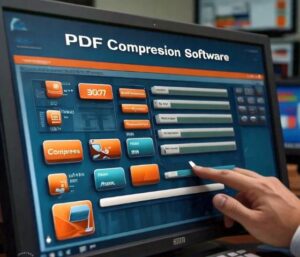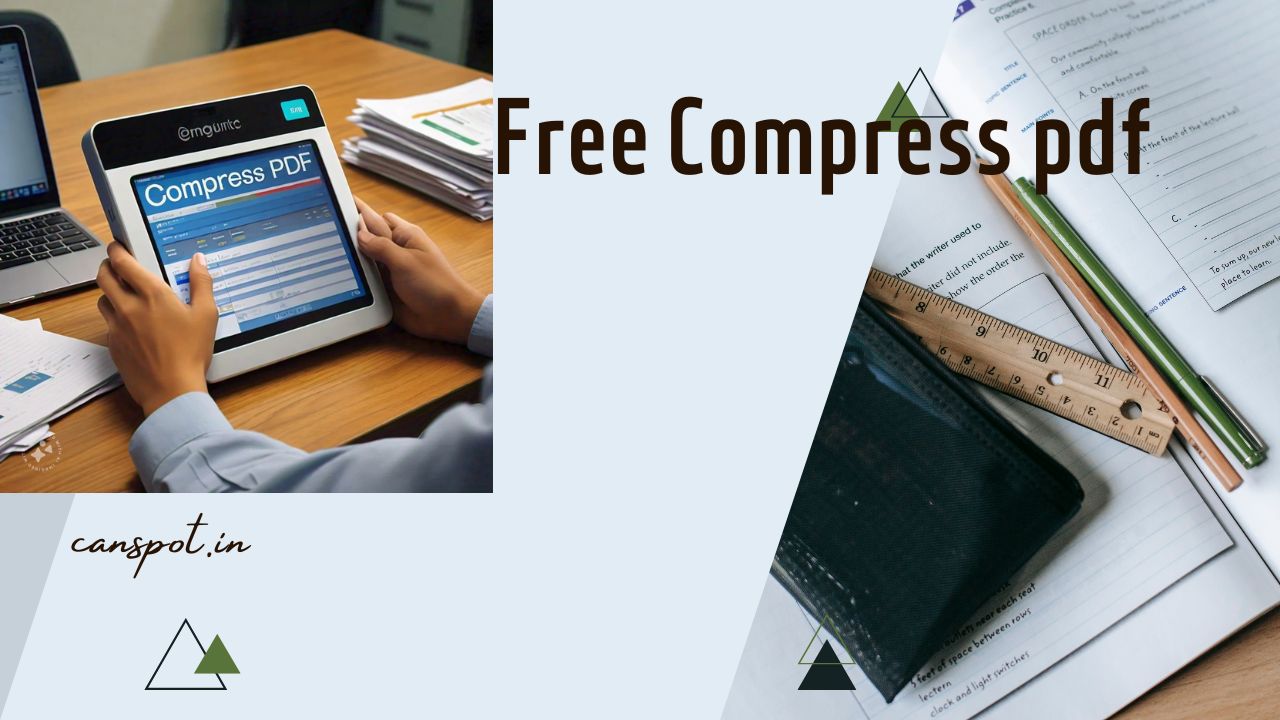In today’s digital world, PDF files are crucial for a variety of tasks, from business contracts to e-books. However, large PDF files can be cumbersome to store, share, and even open. Learning how to compress a PDF file is essential for anyone looking to manage documents more efficiently.
This guide will outline the best methods for compressing PDF files, ensuring you can reduce file size without compromising quality.

✂️ Why Compress a PDF File?
PDF compression offers several advantages:
- Reduced File Size: Makes storage and sharing more manageable.
- Improved Performance: Faster loading times for websites and email attachments.
- Enhanced User Experience: Quicker downloads, especially important for mobile users.
- Compliance with Email Limits: Helps keep attachments within the size limits set by email providers.
🔧 Best Methods How to Compress a PDF File
1. Online PDF How to Compressors
Online PDF compression tools are easy to use and are often free. Popular options include:
- Smallpdf: Offers basic and strong compression modes.
- ILovePDF: Provides multiple PDF management tools, including compression.
- PDF Compressor: Simple and effective for quick compression.
Steps to Compress a PDF Using Online Tools:
- Visit the website of your chosen PDF compressor.
- Upload your PDF file by dragging and dropping it or selecting it from your device.
- Choose the compression level if available.
- Click ‘Compress’ to begin the process.
- Download this PDF file in compressed format to your device.
2. Adobe Acrobat Pro DC

For frequent PDF users, Adobe Acrobat Pro DC offers a powerful and comprehensive tool for PDF management, including compression.
Steps to Compress a PDF Using Adobe Acrobat Pro DC:
- Upload your PDF to Adobe Acrobat Pro DC.
- Navigate to the ‘File’ menu and select ‘Save As Other’.
- Choose ‘Reduced Size PDF’ from the drop-down menu.
- Select version compatibility for better compression.
- Click ‘OK’ to save the compressed PDF.
3. PDF Compression Software

Dedicated PDF compression software is ideal for regular use, offering more features and better compression rates than online tools.
Top PDF Compression Software:
- PDF Optimizer: Allows detailed control over compression settings.
- NXPowerLite: User-friendly software that integrates with email and cloud storage services.
- PDF Shrink: Designed for Mac users, it provides excellent compression while maintaining quality.
Steps to Compress a PDF Using Software:
- Install the PDF compression software on your device.
- Open the application and add your PDF file.
- Adapt the compression settings to your need.
- Click ‘Compress’ and save the file.
4. Compressing PDFs on Mac
Mac users can compress PDFs using Preview, a built-in application.
Steps to Compress a PDF Using Preview on Mac:
- Open the PDF file in Preview.
- Go to ‘File’ > ‘Export’.
- Select ‘Quartz Filter’ and choose ‘Reduce File Size’.
- Click ‘Save’ to save the compressed file.
5. Canspot.in PDF Compress Tool
The Canspot.in PDF Compress tool is a reliable online solution for quick PDF compression, offering an easy-to-use interface.
Steps to Compress a PDF Using Canspot.in:
- Visit Canspot.in and navigate to the PDF Compress section.
- Upload your PDF file by dragging it into the upload area or clicking to select your file.
- The tool will automatically compress the file, balancing size reduction and quality.
- After the procedure is finished, get the compressed PDF file.
6. Command Line Tools for Advanced Users
For advanced users, Ghostscript offers a command line-based solution for compressing PDFs, providing fine control over the compression process.
Steps to Compress a PDF Using Ghostscript:
- Install Ghostscript on your computer.
- Open the command prompt or terminal.
- Enter the following command:
Copy code:
[ gs -sDEVICE=pdfwrite -dCompatibilityLevel=1.4 -dPDFSETTINGS=/screen -dNOPAUSE -dBATCH -sOutputFile=output.pdf input.pdf ]
- Replace ‘input.pdf’ with your original file’s name and ‘output.pdf’ with the desired name of the compressed file.
Press Enter to execute the command and compress the file.
📝 Best Practices for PDF Compression

1. Balance Quality and Size
Ensure that compression balances file size and content quality. Too much compression can degrade images and graphics.
2. Choose the Right Tool
Select a compression tool based on your frequency of use. Online tools are great for occasional use, while software like Adobe Acrobat Pro DC is better for regular tasks.
3. Keep Software Updated
Update your compression software frequently to take advantage of the newest additions and enhancements.
4. Test Before Sharing
Review the compressed PDF to ensure it meets quality standards. Test it on different devices to confirm correct display.
🔚 Conclusion
Compressing a PDF file is an essential skill for anyone managing digital documents. Whether you opt for online tools, dedicated software, or command line utilities, you can reduce PDF file sizes effectively without sacrificing quality. By following the methods and best practices outlined in this guide, you’ll be able to handle PDF files more efficiently, ensuring they are optimized for sharing, storage, and performance.




